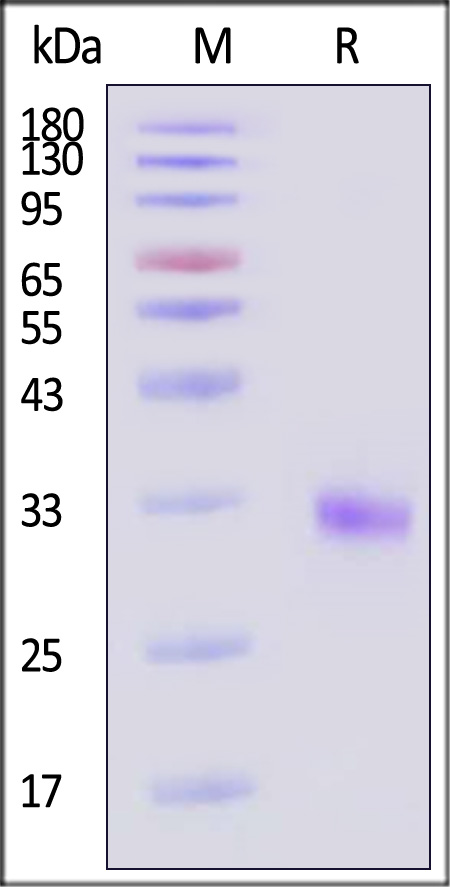 Limited Edition Golden Llama is here! Check out how you can get one.
Limited Edition Golden Llama is here! Check out how you can get one.  Limited Edition Golden Llama is here! Check out how you can get one.
Limited Edition Golden Llama is here! Check out how you can get one.
 Offering SPR-BLI Services - Proteins provided for free!
Offering SPR-BLI Services - Proteins provided for free! Get your ComboX free sample to test now!
Get your ComboX free sample to test now!
 Time Limited Offer: Welcome Gift for New Customers !
Time Limited Offer: Welcome Gift for New Customers !  Shipping Price Reduction for EU Regions
Shipping Price Reduction for EU Regions
| Kat. Nr. | Arten | Produktbeschreibung | Struktur | Reinheit | Merkmal |
|---|---|---|---|---|---|
| CAL-H52H3 | Human | Human Cathepsin L / CTSL1 Protein, His Tag (active enzyme) |  |

|
|
| CAL-M52H3 | Mouse | Mouse Cathepsin L / CTSL1 Protein, His Tag (MALS verified) |  |

|

The purity of Mouse Cathepsin L Protein, His Tag (Cat. No. CAL-M52H3) is more than 90% and the molecular weight of this protein is around 35-50 kDa verified by SEC-MALS.
| Name | Research Code | Research Phase | Company | Indications | Clinical Trials |
|---|---|---|---|---|---|
| Olgotrelvir | STI1558; STI-1558 | Phase 3 Clinical | Texas A&M University | Coronavirus Disease 2019 (COVID-19) | Details |
| SLV-213 | SLV213; SLV-213 | Phase 1 Clinical | University Of California San Diego | Coronavirus Disease 2019 (COVID-19) | Details |
This web search service is supported by Google Inc.
